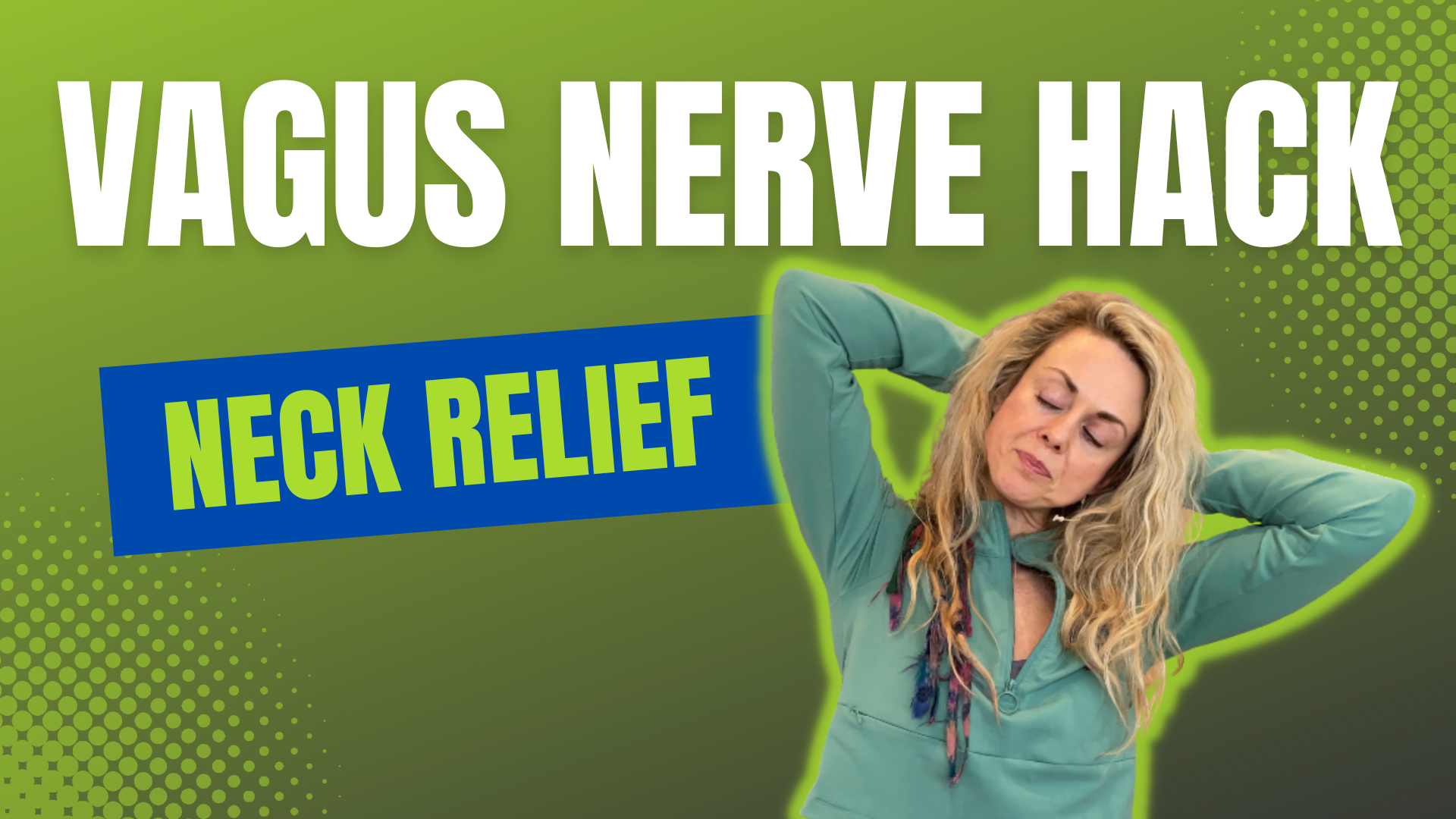Did you know that mechanical issues at the level of your cervical spine can influence the proper function of your vagus nerve? This can ultimately affect your blood pressure, heart rate, gut issues, anxiety, depression, and more. Essentially, this is yet another potential underlying cause that you may want to explore as the root of your vagal nerve dysfunction.
Rather watch or listen?
Anatomy
As we know from our vagus nerve anatomy, the vagus nerve exits the brainstem. As it comes forward through this jugular foramen, it branches into the ear and throat. Then it comes actually down right through the front of the neck before it enters the heart, lungs, and digestive track.
What happens when there is a restriction in mobility?
Any restriction in mobility can create mechanical pressure and, therefore, neuroinflammation of the vagus nerve. For example, forward head posture can create compression of the vagus nerve. If you are sitting at a desk all day, have an airway dysfunction such as a deviated septum, small nasal valves, enlarged turbinates, tonsil and adenoid issues, could influence forward head posture.
We also want to think about forward head posture as a result of the nervous system. If we are stressed, anxious, and depressed, that will also lend itself to a forward head posture, potentially a rounded posture.
Breathing and posture are interdependent on each other. If there’s a breathing issue, there’s a posture issue; if there’s a posture issue, there’s a breathing issue.
What can you do if you have posture issues
1. Body awareness
We can become aware of how we hold our bodies throughout the course of the day. We can become in tune with our postures and our positions, how long we’re there, and be able to simply just check-in.
2. Addressing the issue
The second thing is addressing or exploring what airway issues may be present for you. If you are suspicious of this, seek out a professional to evaluate you.
At the minimum, try Mutes, a nasal dilator at night, to open the airway up to 38 percent, along with Xlear. It is important to reinforce nasal breathing.
3. Try these vagus nerve hacks
There are many ways to stimulate the vagus nerve, and I’ve done several blogs and videos on different exercises that can be very helpful.
● Trapezius twist
The first, by Stanley Rosenberg, is the trapezius twist.
Grab your elbows and rock them back and forth at waist level, chest level, and above your shoulders.
It wakes up the trapezius muscles in the back and improves your posture immediately.
● Myofascial release
When your lymph is congested, this can cause inflammation of the vagus nerve.
With your hand moving in a diagonal direction under your jawline towards your ear, traction the tissue up very gently. Move the skin over the tissue.
Hold that position until you have some release. This may come in the form of a sigh, swallow, yawn, or a feeling of just a sense of relaxation. It will immediately bring your neck into a better position and could potentially relieve not only mechanical pressure on the vagus nerve but the other cranial nerves and even spinal nerves as well.
● Salamander exercise
This is a version of Stanley Rosenberg’s exercise that I found to be extremely helpful. You’re stimulating the vagus nerve while also relaxing the spinal accessory nerves.
To do this exercise, interlace your fingers and bring them behind the back of your head. From this position, side-bend your upper body, and look with your eyes in the opposite direction. Hold that position for 30 seconds, and then you’ll come back to the center and repeat on the other side.
You want to check your range of motion in your neck before and after, and there should be an immediate improvement.
This provides neurological input from your eyes and your hands to the back of your head. It brings blood flow to the brain stem, where the vagus nerve and other cranial nerves exit. This creates a relaxation response as well as stimulates the spinal accessory nerve to create relaxation in the Sternocleidomastoid muscle and the upper trap muscle.
The mechanical influence of how your neck is positioned, joint mobility, soft tissue elasticity, lymphatic congestion, and airway dysfunction can all influence your vagus nerve.
Make sure to subscribe to our YouTube channel, The Movement Paradigm, for weekly tips on mindset, nutrition, and movement, and if you’d like to reach out to us for a consultation, please do so we would love to help.
Other things that might interest you:
What if vagus nerve hacks aren’t working

